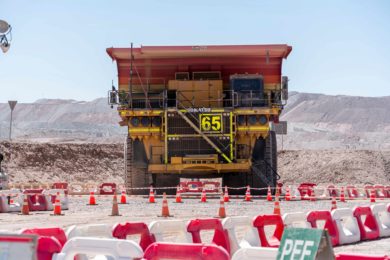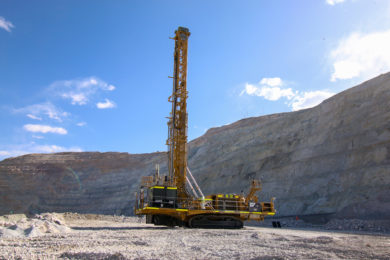China dominates the global aluminium industry accounting for one third of both world production and world consumption of primary aluminium, according to analysis group Roskill Information Services’ The Economics of Aluminium (9th Edition 2009) publication. The report shows that while China is self sufficient in aluminium metal and approaching self sufficiency in alumina, dependence on imported bauxite remains high despite rising output. However, power supply issues and high costs of production could result in declining production in the longer term and the possibility that China will become a net importer of primary aluminium.
Russia, Canada, the USA, Australia, Brazil, Norway and India are the principal producing countries after China. These countries, together, account for about three quarters of world output of primary aluminium. Although some 200 smelters, half of which are in China, produce primary aluminium, 14 companies operating about 100 plants controlled over 60% of output in 2007.
The report states that “world aluminium output rose by between 0.15 and 12.2%/y between 1994 and 2008, averaging 5%/y. Growth averaged around 7%/y after 2001 mainly due to explosive expansion in production in China. Output began to contract in the second half of 2008 and this accelerated in 2009, meaning that world aluminium production is likely to decline for the first time in fifteen years and by as much as 5%.
“In 2009, almost fifty aluminium smelter projects, with a total capacity of 20 Mt/y, were at various stages of development, but only 10, with a total capacity of 2.8 Mt/y, were already under construction. For most of these projects, no decision with regard to timing had been finalised and the timetables of the others are under review. At the same time, most of the major producers are idling high cost and inefficient capacity in response to low demand and prices. The earliest major project to come online will probably be Qatalum in Qatar, which is likely to be a very low cost producer. During 2008, a new 300,000 t/y smelter started operations in Oman and UC Rusal restarted output in Nigeria.
“Reported production (which excludes as much as 2 Mt in China) of refined secondary aluminium and aluminium alloy amounted to about 8.8 Mt/y in 2007, mainly in the USA, Japan, Germany and Italy. A further 3 to 3.5 Mt/y of secondary aluminium is recovered directly into end-uses. US-based Aleris International, owned by Texas Pacific and, formed in 2004 by the merger of IMCO Recycling and Commonwealth Industries, is probably the world’s largest aluminium recycling company. Novelis, which acquired Alcan’s secondary facilities in the USA, and Hydro Aluminium North America are [also] major aluminium recyclers.”
Roskill’s report shows that between 1998 and 2007, world primary aluminium consumption grew by a year-on-year average of 5.6% to reach 37.2 Mt. After a fall of 5.3% in 2001, aluminium consumption increased by an average of 7.8%/y up to 2007, largely driven by Chinese consumption, which increased by an average of 23.7%/y over the same period. Chinese aluminium consumption is, by a sizeable margin, the largest in the world, having overtaken the USA in 2004. Japan is the third largest consuming country.
Total use of aluminium including all forms of secondary metal, amounted to about 51 Mt/y in 2007, and the report sees little change coming from 2008 figures. Consumption was divided regionally into about 44% in Asia and 27% each in Europe and the Americas, while the major markets for aluminium were transportation (14% of demand), construction (11%) and packaging (6%).
The Chinese market (almost 30% of the world total in 2007 and 2008) expanded by about 27% in 2007; Antaike estimates that it increased by about 8% in 2008 and will increase by 3% in 2009. Roskill’s report predicts that “in Europe, North America and Japan, demand will almost certainly fall in 2009 and will either level out or show minimal growth in 2010. The market will start to recover in the second half of 2010, and global growth of 4 to 5%, led by China, is likely in 2011. Average growth in the global aluminium market to 2013 will probably be about 2.6%/y resulting in total demand of about 58 Mt.”
The LME monthly average cash price for high grade aluminium fell from a record high of $3,070/t in July 2008 to $1,329/t in February as LME stocks increased from 1.1 Mt to 3.2 Mt. There were signs that prices had bottomed out in March/April 2009, and had stabilised in a range between $1,400 and $1,500/t. The report comments that “lower production and the end of ‘destocking’ is expected to stop or reverse the increase in inventories and push prices up to between $1,500 and $1,700/t by September or October 2009, and they may reach $1,800 t by year-end. In 2009, aluminium prices will probably average $1,400 to $1,450/t. The large stocks are expected to overhang the market until the slide in global demand is reversed, which most analysts expect to happen in early 2010.”
In the early and mid 2000s, cash production costs for primary aluminium rose steeply to a global average of almost $2,000/t, mainly because of increased alumina and power costs. Alumina prices have fallen with those of aluminium, but power costs remain high, and prices in early 2009 were less than the costs of many producers.
Electrical power and alumina are the most costly inputs in the production of primary aluminium. “A secure, low cost and proximal supply of power is a more important factor than either nearby raw materials or markets, when deciding on a location for an aluminium smelter. The presence of large smelters in Bahrain, Dubai, Oman, South Africa, Mozambique and Iceland is evidence of this. Countries such as Canada and Norway take advantage of both plentiful hydroelectricity and nearby markets. New smelters are under construction in Abu Dhabi and Qatar to take advantage of gas resources.”
More information on The Economics of Aluminium (9th Edition 2009) can be found at www.roskill.com/reports/aluminium









